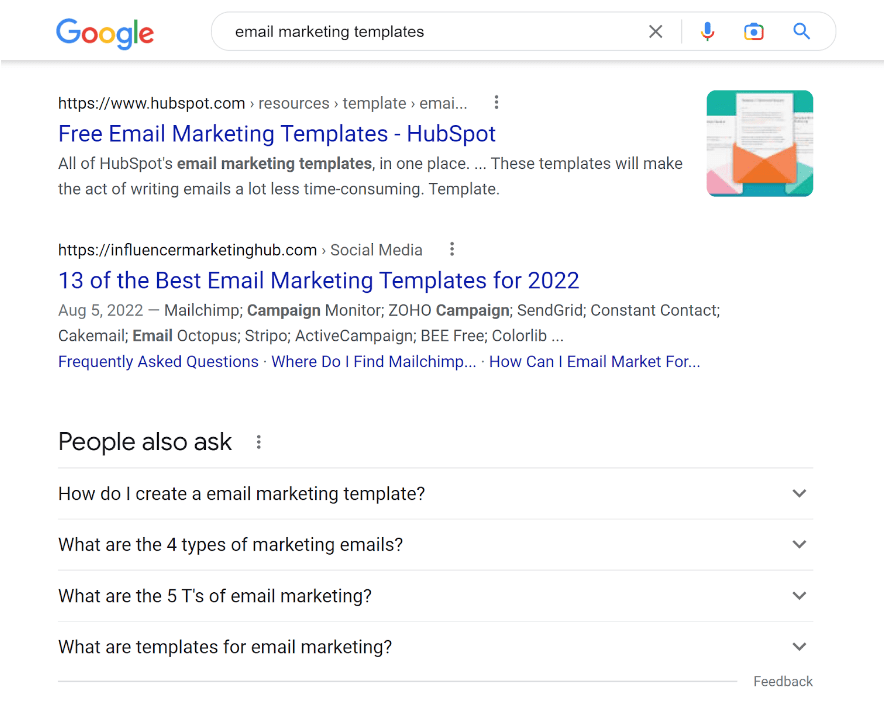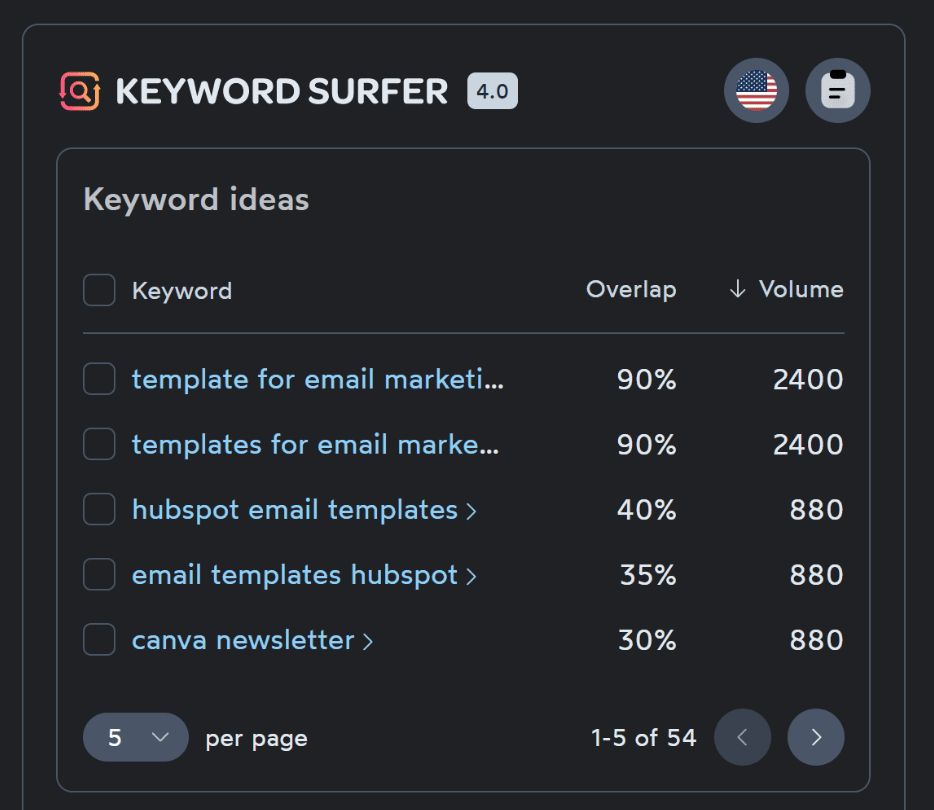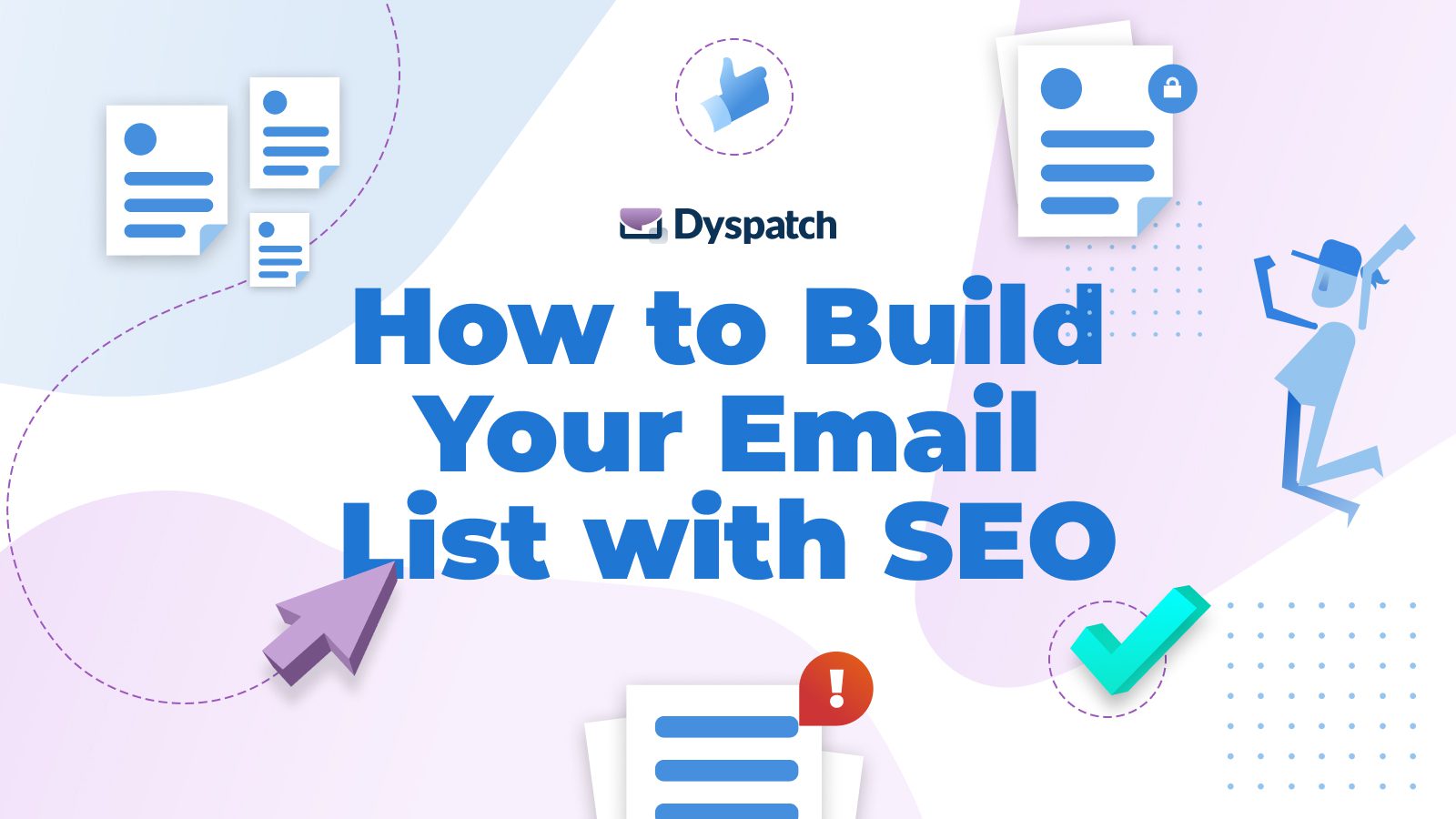Email marketing is the most profitable marketing method today, with an average profit of $42 for every dollar you invest.
That’s a mindblowing 4,200% return! 🤯
No wonder 87% of marketers prefer email marketing to promote their content.
However, all this golden glitter only starts when someone signs up for your email list, which is the tricky part.
Because according to studies, over 25% of marketers have 0.82% email sign-ups only, which means no one cares even if you ask a hundred people— it’s rejection en masse.
But don’t worry, a successful email sign-up form is as simple as asking for your crush’s phone number: it never works when you beg, yet it always works when you impress, let them come to you, ignore them for a while, and give yours instead.
This is how Search Engine Optimization (SEO) works, and by reading this short 5-minute blog, you will know:
- The benefits of using SEO for email list-building.
- The step-by-step guideline on using SEO for list-building.
- The free tools to flawlessly execute your strategy.
Now let’s get into it.
The Benefits of Using SEO for List Building
In a nutshell, the content flexibility in SEO allows you to attract traffic in any form of search intent, whether it’s…
- Informational (they want to know something)
- Navigational (they want to go somewhere)
- Commercial (they want to buy something)
- Transactional (they’re buying something)
Not only does this expand your audience size to get more traffic, but it also increases conversion rates because you can laser-focus on audiences with immediate needs.
Additionally, using SEO has additional perks outside of list-building, such as:
- More brand awareness.
- More affordability.
- More credibility.
- 24/7 availability to anyone from anywhere.
- Higher click-through rates than paid ads.
- Higher market share.
- Faster load speed.
- Better site security.
- Better user experience, and more.
That’s why SEO is an excellent tool for building up your email list.
How to Use SEO for List Building
There are two proven ways which are lead magnets and free tools.
Let me elaborate.
A lead magnet is a reward you offer in exchange for their email address.
It could be a PDF guide, an eBook, a video course, or a coupon code.
According to 58.6% of marketers, a short-form lead magnet like newsletters, checklists, or ebook samples is the highest-converting strategy.
However, you need to get them to your lead magnet first; to accomplish this, you need outstanding SEO.
So here’s a free 80-point on-page SEO checklist to help you out.
See what I did there?
I just brought you to a lead magnet by targeting a need and then giving an instant solution.
In exchange, you just need to sign up with your email.
This is a lead magnet, and this is the gist of how it works.
Now let’s get into a bit more detail.
Create your lead magnet
So how do we create our magic lead magnet?
Step 1: Decide What Information You Can Offer to Your Target Audience
Think about what information your target audience would find interesting. Consider any problems or challenges they’re likely facing that you could help solve. Put yourself in their shoes and provide real value to their pain points.
Step 2: Brainstorm Ideas
Now that you know the type of information you want to provide, brainstorm potential lead magnet ideas. Think about how the different topics might be presented: as a guide, checklist, template, e-book, webinar recording, or something else entirely.
Here are a few ideas with examples:
- Demo
- Podcast
- On-demand webinar
- Setting membership questions in a Facebook group
- Ebook
- Guide
- Report
- Newsletter
- Toolkit
- Video course
- Discount
- Free consultation
- Checklists
- Free class
- Free shipping, and more.
Step 3: Create Your Lead Magnet
Now that you have an idea of what you’re going to create, it’s time to get to work. Outline the content, write your copy, design a cover or graphic if necessary, and ensure everything looks great. Flesh the ideas out and
The next step is bringing traffic into this lead magnet, which is what SEO is for.
We’ll list the relevant high-volume yet low-competition keywords you can rank for, create blog posts around their possible search queries and redirect them to our lead magnet.
Let’s take it step-by-step.
Keyword research
Once your lead magnet is ready, it’s time to haul the visitors in with the keywords they’re searching for.
Here’s one way to do it:
Step 1: Use Google to find lead magnet ideas by searching a keyword related to your niche + the word “template.”
Hint: add the word “download” for especially relevant results.

Step 2: Use Keyword Surfer to estimate keyword search volumes.
Download Keyword Surfer for Chrome to tell you your lead magnet's potential search volume.

A handy sidebar also shows related keywords and their search volumes for free.

If you want to try other keyword research tools, here are some alternatives:
Create blog content optimized for those keywords
Once you have your keywords, it's time to start creating content.
Write blog posts that include those keywords (especially on the title, first subheadings, and introduction), then have a Call-To-Action (CTA) for your lead magnet.
Here’s a guide and a few examples on writing a CTA.
Now moving on, here are some tips for writing optimized blog posts:
- Brainstorm your content ideas: Before you start writing, take the time to brainstorm topics that are relevant to your blog and tailored towards your audience.
- Do keyword research: Once you have some topic ideas, do some keyword research to find out what phrases people use when they search for content related to it. That way, you can tailor your post title and content around those keywords to ensure it is optimized for search engines.
- Strategize headings and subheadings: A good blog post should include various titles and subheadings throughout the text so that readers can easily follow along with the content without feeling overwhelmed or bored by large blocks of text. Make sure each section is related to the overall topic of your post and flows logically from one heading to the next.
- Write in an engaging, conversational tone: A blog post isn't a research paper; it should be written casually in a friendly manner that engages readers. Make sure you're using language that is easy to understand and avoid long sentences or overly technical jargon.
- Link to relevant sources: When appropriate, add links within your post's content so readers can easily access additional information if needed. This adds credibility to your post and increases readers' trust in what you're saying.
- Add visuals when possible: Visuals break up large blocks of text, making your post easier to read and understand. Try adding screenshots, diagrams, images, or even videos related to your post's topic.
- Edit and proofread: Once you're done writing, go back and edit your content for any typos or grammatical errors. This will ensure that your post looks professional and is free from mistakes.
If you’ve got the AI bug, you can use a tool like Content at Scale to produce high-quality, long-form content simply by uploading a keyword. You’ll get 2,000-word posts that bypass AI content detection - allowing you to be much more efficient.
Wanna know more? Check these eye-opening resources out: How To Start A Successful Blog, How to Write Content That People Will Love to Read and Share and How Search Engine Optimization (SEO) works.
Promote your content
Once you’ve optimized your site and content for SEO, the next step is to start promoting it.
Here are a few steps to start:
- Create a shareable content plan: Come up with ideas on what kind of content you want to create and how often you’d like to post it. Create an editorial calendar to stay organized and consistent with your updates.
- Reach out to other blogs: Once you have a few blog posts written, start reaching out to other bloggers in your niche or related topics and offer them your content as a guest post. Be sure to include links back to your website or blog within the content.
- Promote on social media: Promote your blog content on social media platforms such as Twitter, Facebook, LinkedIn, and Instagram. You can also use paid options like Google AdWords or Facebook Ads for more targeted promotion opportunities. Take advantage of hashtags and create engaging visuals for maximum exposure
- Participate in forums: Join relevant discussion forums and regularly participate by answering questions and providing helpful information about the topic. Make sure to link back to your blog in relevant threads or comments.
- Leverage influencers: Reach out to influencers in your niche, build relationships, and engage them with quality content. Ask if they would be willing to share it on their channels, giving you more exposure and visibility for your blog content.
Free Tool Strategy for Email List Building
Offering a free tool is another easy way to grow your email list with SEO.
This could be a plugin, an app, or even a calculator.
The key to success in this route is ensuring that your free tool solves an immediate problem that the target audience has. If it doesn’t, then you won’t be going anywhere.
Now let's break this down step-by-step.
Finding Ideas for a Free Tool
Think about the problems your niche commonly has.
For instance, if you're in the health and fitness niche, you could create a calorie calculator or a workout tracker.
Another approach is to take an existing tool and add an email capture.
For example, you could find a popular recipe plugin and add an email capture form.
This way, people who use the tool will sign up for your email list.
How to Build the Free Tool
There are a few different ways you can go about this.
One is to create the tool yourself if you have the coding skills.
If you’re going this route, then here are some tips:
- Decide on the type of free tool you want to create: An online calculator, a quiz, an ebook, a printable worksheet or cheat sheet, an audio recording, or some other helpful resource.
- Design the look of your free tool: If you're creating a digital resource (ebooks, webpages, etc.), use simple visuals to make it visually appealing and add value to your offer (images, illustrations, etc.).
- Write the content of your free tool: Write down all the relevant information depending on the type of resource you're creating. Ensure each section is clear and concise so readers can get the most out of it.
- Create a landing page to promote your free tool: This is where potential subscribers can find out more about your offer and sign up for it. Include an eye-catching headline, an attention-grabbing image, bullet points highlighting its benefits, and a simple signup form.
Another option is to hire a developer to create it for you.
Some places to hire developers are:
You can also use no-code platforms.
These platforms allow you to create tools and apps without coding.
Some popular no-code platforms are:
Once the free tool is created, you just need to add an email capture form. This can be a popup or a sidebar form: The key is to make it easy for people to sign up.
Create an SEO-Optimized Landing Page for the Tool
Once the free tool is created, you need to create a persona-driven landing page for it.
This is the page people will go to when they want to use the tool.
The key to the landing page is to make it SEO-friendly.
This means you should:
- Use keyword-rich titles.
- Use keywords throughout the page.
- Optimize your meta tags.
- Use Alt tags for images.
- Create keyword-rich anchor text.
- Use internal linking.
- Optimize your website for mobile.
- Increase your page speed.
- Use social sharing buttons.
- Monitor your activity with Google Analytics.
Once You have Your Email List, What’s Next?
Now that you have succeeded in growing your email list using SEO, it’s time to look at securing those emails and taking them to the next level.
There are a few key steps you need to take to ensure that your emails stay safe and protected:
- Invest in an email gateway service. An email gateway is a tool that sits between your domain and external emails, screening incoming messages for potential threats and scanning them for malicious code or spam. This helps to protect the integrity of your list since you won’t be sending out any emails with viruses or malware attached. Learn more about the significance of email gateway services here: Why You Need To Secure Your Emails With Email Gateway Services
- Utilize email automation. Email automation allows you to pre-program messages to go out on a preset schedule, freeing up time and energy so that you can focus on other tasks while still keeping your customers informed about new offers and updates with automated emails, tracking who opens what is more manageable so that you can target specific content based on customer interaction with previous emails.
- Put together an email marketing strategy. You should have a pretty good idea of who your customers are and what their interests are. Create an email marketing plan that outlines the type of content you will be sending out (e.g., promotional emails, newsletters, etc.), frequency of messages, incentives for subscribing, and any other relevant information to ensure you’re optimizing the effectiveness of your list. If you want to know more, then check out these helpful resources: The Ultimate Guide to Email Marketing, How to Build an Email List Fast from Scratch and How to Create an Email Marketing Strategy That Will Grow Your Business.
- Implement interactive emails. When a user opens an email from you, they expect to be able to interact with it. For example, they may want to click on a link that takes them back to your website or view a video inside their inbox. With interactive email services like Dyspatch, this is now possible! They offer features such as drag-and-drop editors and easy integration with other tools so you can create great-looking emails with minimum effort. With this service, you can craft customized emails tailored to each user’s experience, reducing engineering resources by 95%, boosting email conversions by 300%, and email engagement by over 500%
So remember to include interactive email services in your plans for building up a successful email list.
If you follow these steps with your email list plan, you’ll be well on building lasting customer relationships!
Summary
To sum up, you build an email list through SEO by building an irresistible lead magnet and bringing traffic to it through blog posts.
You build a lead magnet by offering instant solutions to their current need, like guides, checklists, video courses, and more.
You can also give free tools like plug-ins, trackers, and more by building an app, or hiring a developer to make it for you, then offering it as a solution to a need again.
This strategy is quoted as the highest-converting strategy by over 58.6% of marketers, and it will work wonders for you too.
That’s all, now good luck and don’t forget to share the blog around if you found this helpful!
